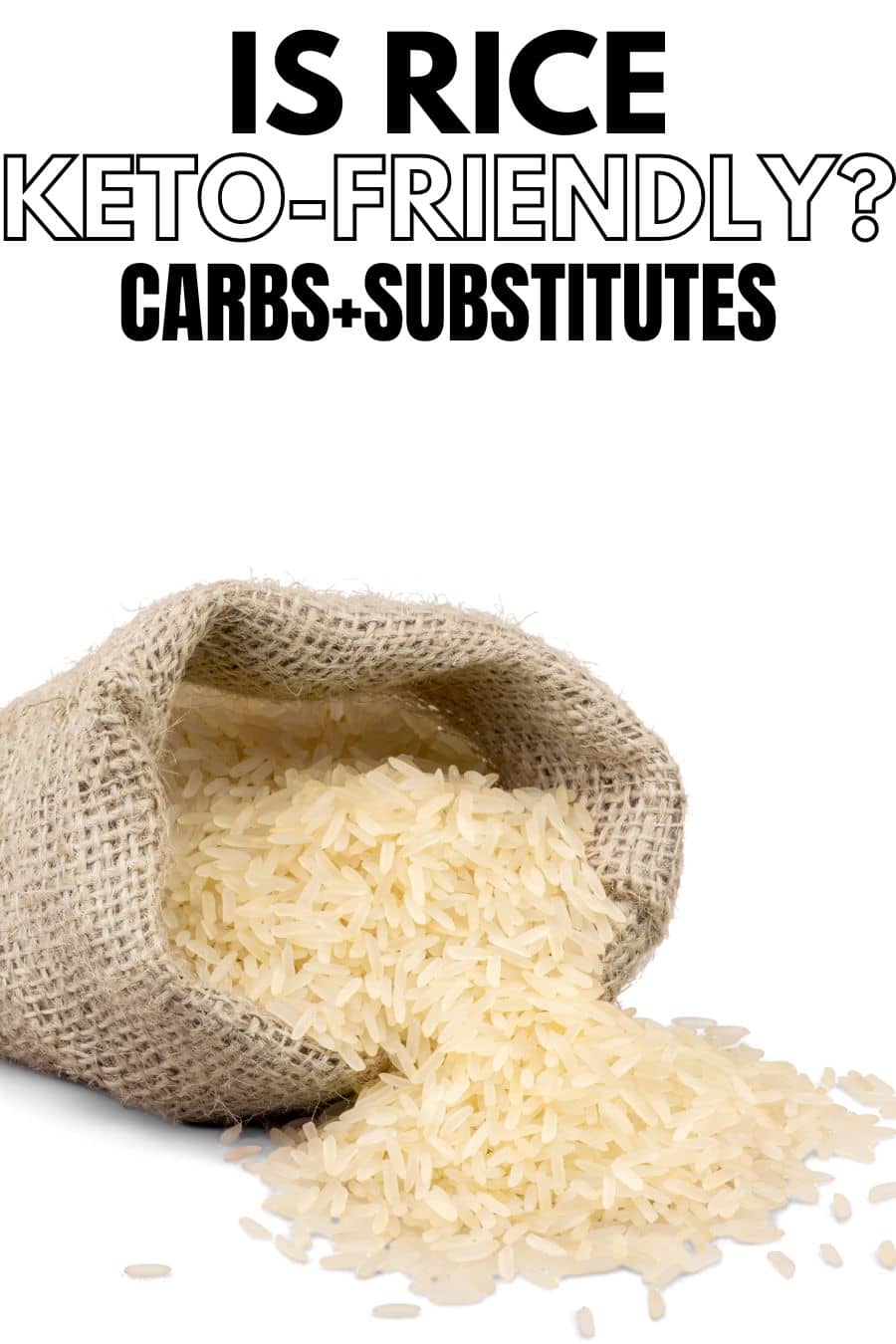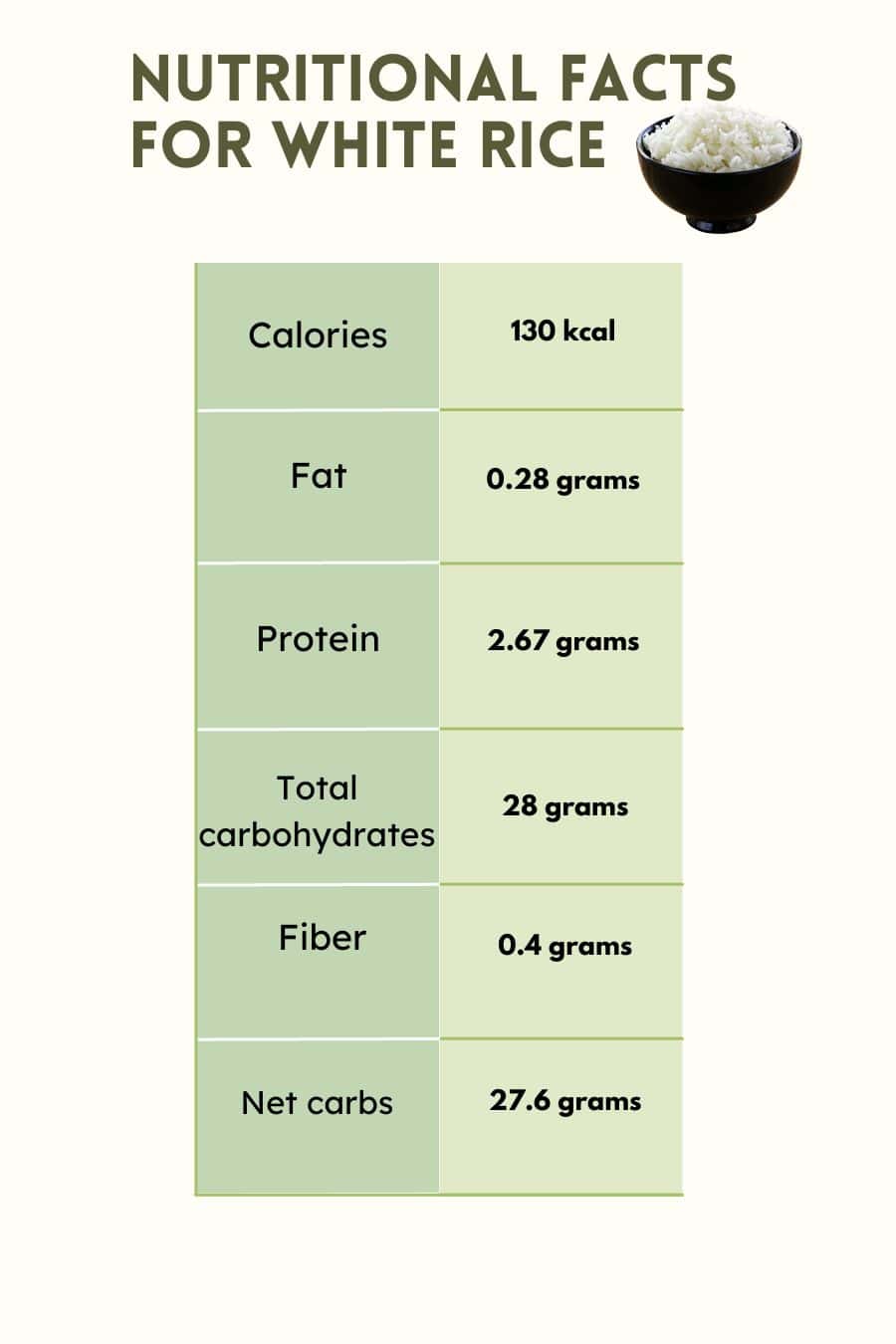Rice is one of the most widely consumed grains across the globe. It’s affordable, easy to prepare, and incredibly versatile—showing up in everything from stir-fries to casseroles, sushi, and soups. With thousands of varieties in different shapes, textures, flavors, and colors, it’s no wonder rice is a staple food for more than half the world’s population.
But if you’re following a low-carb or ketogenic diet, you might be wondering: Is rice keto? While rice is beloved for its simplicity and ability to complement just about any meal, it’s also high in carbohydrates—making it a poor fit for the keto lifestyle. Keep reading to discover how rice affects your carb count, and explore the best low-carb rice alternatives to keep your meals both satisfying and keto-friendly.

What Is a Keto Diet?
The keto diet, short for ketogenic diet, is a low-carb, high-fat eating plan designed to shift the body’s metabolism away from carbohydrates and toward fat as its primary fuel source. By drastically reducing carbohydrate intake and replacing it with healthy fats, the body enters a state called ketosis.
In ketosis, the liver converts fats into ketones, which serve as an alternative energy source—especially for the brain. Since glucose (from carbs) is limited, the body becomes highly efficient at burning fat for energy, which can promote weight loss and improve mental focus and energy levels.
This shift also leads to lower blood sugar and insulin levels, making the ketogenic lifestyle popular for those managing type 2 diabetes, insulin resistance, or metabolic syndrome.
What Is Rice?
Rice is a cereal grain scientifically known as Oryza sativa, and it’s one of the most widely consumed staple foods in the world—especially across Asia, where it forms the foundation of many traditional diets. This versatile grain is available in over 40,000 varieties, ranging in shape, size, color, texture, and flavor.
Rice is used in countless global cuisines, from simple steamed rice and stir-fries to sushi, risottos, and desserts. The most common types include white rice, brown rice, basmati, jasmine, wild rice, and arborio—each offering a unique culinary experience and nutritional profile.
Is Rice Keto-Friendly? Can You Eat Rice on a Keto Diet?
If you’re following a low-carb or ketogenic diet, you’re probably wondering: Is rice keto-friendly? Unfortunately, the answer is no—rice is not keto-approved.
Most varieties of rice—including white rice, brown rice, jasmine, and basmati—contain around 45 grams of carbohydrates per cup, which is well above the typical daily carb limit on keto (about 20 to 30 grams of net carbs). Even a small portion of rice can easily kick you out of ketosis, the fat-burning metabolic state that makes keto effective.
Eating high-carb foods like rice can cause blood sugar spikes and increase insulin levels, which works against the goal of maintaining a state where your body burns fat for fuel instead of carbs.
But don’t worry—you don’t have to give up rice-like dishes altogether. There are several keto rice alternatives made from vegetables or low-carb ingredients that mimic the texture and taste of rice without disrupting your low-carb goals. Options like cauliflower rice, konjac rice, and broccoli rice are delicious, easy to prepare, and perfect for keto meals.
Nutritional Facts For White Rice
- Calories: 130 kcal
- Fat: 0.28 grams
- Protein: 2.67 grams
- Total carbohydrates: 28 grams
- Fiber: 0.4 grams
- Net carbohydrates: 27.6 grams

Different Types of Rice
1. Brown Rice
- Nutritional Facts (per 100g):
- Calories: 111 kcal
- Carbohydrates: 23.5g
- Protein: 2.1g
- Fat: 0.9g
- Fiber: 1.8g
Brown rice is a whole grain rice that retains the bran and germ layers, making it more nutritious than white rice. It has a nuttier flavor and is a good source of fiber, vitamins, and minerals.
2. Wild Rice
- Nutritional Facts (per 100g):
- Calories: 101 kcal
- Carbohydrates: 21.3g
- Protein: 4.0g
- Fat: 0.3g
- Fiber: 1.8g
Wild rice is not a true rice but the seed of an aquatic grass. It is more nutritious than white rice and has a distinct, earthy flavor. It is higher in protein and fiber.
3. Basmati Rice
- Nutritional Facts (per 100g):
- Calories: 150 kcal
- Carbohydrates: 35g
- Protein: 3.5g
- Fat: 0.6g
- Fiber: 1.6g
Basmati rice is a long-grain rice known for its aromatic qualities and slightly nutty flavor. It has a lower glycemic index than white rice and is often preferred in Indian and Middle Eastern cuisines.
4. Jasmine Rice
- Nutritional Facts (per 100g):
- Calories: 130 kcal
- Carbohydrates: 28.2g
- Protein: 2.7g
- Fat: 0.2g
- Fiber: 0.3g
Jasmine rice is another aromatic long-grain rice with a floral aroma. It has a softer and stickier texture, making it popular in Thai and Southeast Asian dishes.
5. Arborio Rice
- Nutritional Facts (per 100g):
- Calories: 360 kcal
- Carbohydrates: 77g
- Protein: 7g
- Fat: 1g
- Fiber: 1.4g
Arborio rice is a short-grain rice known for its high starch content. It is often used to make creamy risotto because it absorbs liquids and creates a creamy texture.
6. Black Rice (Forbidden Rice)
- Nutritional Facts (per 100g):
- Calories: 340 kcal
- Carbohydrates: 76g
- Protein: 8.5g
- Fat: 2.2g
- Fiber: 4.9g
Black rice, also known as “forbidden rice,” is a whole grain rice with a dark, purple-black color. It is rich in antioxidants, fiber, and essential nutrients.
Best Low-Carb Alternatives for Rice on a Keto Diet
If you’re cutting carbs but still want to enjoy your favorite rice-based dishes, these keto-friendly rice substitutes are the perfect solution. They’re easy to prepare, low in carbs, and can be used in everything from stir-fries to burrito bowls.
- Cauliflower Rice – It’s just cauliflower pulsed in a food processor until it produces rice-sized granules. It is extremely delicious and perfect as a garnish for any food.
- Shirataki Rice – It’s a unique keto-friendly rice substitute. It’s created from flour obtained from the root of the konnyaku plant. What makes it so miraculous? Shirataki rice has only one carb per serving. Furthermore, because this rice contains soluble fiber, it may aid digestion.
- Konjac Rice – Often used interchangeably with shirataki rice, konjac rice is also made from konjac root. It has a slightly chewy texture and is extremely low in calories and carbs, making it ideal for anyone on a strict low-carb or keto plan. Rinse well before use to remove its naturally earthy scent.
- Broccoli Rice – Broccoli is another low-carb option for your regular rice recipe. Pulse the broccoli until it’s as fine as rice grains in a food processor to make broccoli rice. Cooked broccoli has roughly 6 grams of net carbohydrates and 30 milligrams of calcium per cup, making it a wonderful dairy-free calcium source.
- Zucchini Rice – Zucchini rice is made by grating or pulsing zucchini into small pieces and squeezing out the excess moisture. It has a mild flavor that absorbs sauces well and contains only about 2–3g net carbs per cup. It’s best sautéed briefly to avoid sogginess.
- Cabbage Rice – Chopped or shredded cabbage rice is a hearty and slightly sweet rice alternative. It’s excellent in stir-fries or as a side for grilled meats. At about 3g net carbs per cup, cabbage is not only keto-friendly but also rich in fiber and antioxidants.
Final Thoughts: Is Rice Keto-Friendly?
Rice is high in carbohydrates, making it unsuitable for a ketogenic diet. Just one serving can exceed your daily carb limit on keto, which can kick you out of ketosis.
However, the good news is that there are plenty of low-carb rice alternatives that are just as satisfying and much better suited for a keto lifestyle. From cauliflower rice to shirataki rice, you can still enjoy your favorite dishes without compromising your goals.
So while rice itself isn’t keto-friendly, swapping it with healthy, keto-approved substitutes allows you to keep carbs low while enjoying hearty, delicious meals.
